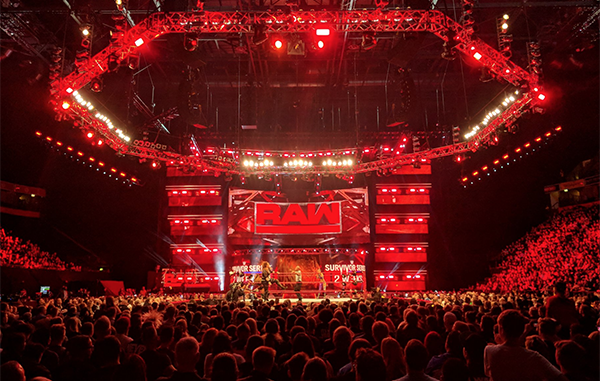
SPOTLIGHTED PODCAST ALERT (YOUR ARTICLE BEGINS A FEW INCHES DOWN)...
Last night’s episode of WWE Monday Night Raw drew a 2.13 rating, down from the previous week’s 2.14 rating, among live and same-night-DVR viewers. The ten-week rolling average coming into this week was 2.11, which includes the lows of the holidays and the highs for Raw 25 and the post-Rumble shows.
Hourly numbers were: 3.262 million, 3.216 million, and 2.837 million, with a first-to-third hour dropoff of 425,000, which is under the 521,000 average so far this year headed into this week. That averaged was 284,000 last year. The final hour included a lightly hyped Roman Reigns vs. Sheamus match and a heavily-hyped Second-Chance Fatal Five-Way main event.
Last year this week Raw drew a 2.16 rating, essentially the same as this week considering a statistical margin of error, but well below the two-year-ago rating of 2.48..
Keller’s Analysis: This is one of those quirky weeks where average hourly viewership went up while the rating went down. Each metric is gauged differently. As I understand it, based on how it’s been explained to me by people in the TV industry, the average viewership indicates how many individual people watched at least part of the hour, whereas the rating is percentage of available homes with access that watched the program minute by minute averaged over the course of an hour. So viewership can go up while the rating goes down if the people who do watch end up watching for a shorter amount of time, but there are more people watching on average at any given time over the course of the hour. For example, to take an exaggerated and simplified situation: If there are 100 TVs in the country that get USA Network, and three of them watch Raw start to finish, that’s a 3 rating and a viewership of 3. But if three people watch the first half of Raw and another three watch the second half of Raw, then it’s a 3 rating (3 percent of all available TVs were watching at any given time) and a viewership of 6 (because six people total watched at least part of the program).
NOW CHECK OUT THIS RECENT UPDATE: Angle makes “historic ruling” on controversial finish on Raw regarding Finn Balor and Seth Rollins scoring simultaneous pins (w/Keller’s Analysis)




Thanks for the ratings guide.
That’s something I didn’t know & puts these things in context.
Wade Keller > Dave Meltzer